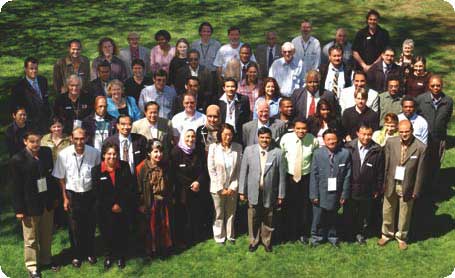Election Visitor Program
During the 2004 election period, the AEC again welcomed a number of guests from overseas electoral management bodies to study and observe the conduct of Australian elections.
The Election Visitor Program is part of the AEC’s ongoing commitment to encouraging communication and cooperation with international electoral bodies. The objectives of the program are to:
- provide electoral knowledge to overseas visitors
- enhance networking with counterpart organisations and promote the exchange of ideas
- provide an opportunity for overseas counterparts to observe Australian electoral events
- encourage good governance in line with Australia’s foreign policy objectives
- provide a forum to showcase the AEC as a professional electoral body.
Forty officials from 15 countries in Asia, Europe, the Middle East, the Pacific and Africa participated in the 2004 visitor program. The visitor program consisted of two concurrent study programs, one based in Canberra and the other based in Melbourne. The study programs are intensive, and are designed for those wishing to examine Australian election processes in detail. The program conducted in Melbourne was more focussed on election operations. The two programs ran for four days before joining together in Canberra for election day activities. A number of other delegates arrived late in the week specifically for the election day program.
It was decided that for this election the program would be conducted with a structure similar to the BRIDGE (Building Resources in Democracy Governance and Elections) electoral administrators’ course. Presenters were asked to give a short overview of their specialized area in morning sessions. The afternoons were then divided into workshops, which gave participants more opportunity for sharing experiences and asking questions.
The program covered all aspects of the AEC’s administration and conduct of elections, such as the legislative framework for conducting elections, election management, voter education, information technology, voter registration systems and the training of polling staff. On election day the participants visited several polling places in the Canberra region to observe polling and the conduct of the preliminary counts before concluding the night at the National Tally Room.
Evaluations and informal feedback from participants was very positive. A number of participants stated that Australians are very fortunate to be able to cast their vote in such a secure environment. Others appreciated the time and opportunity to learn about electoral practices throughout the world.
Appendix A details the electoral officials who participated in the 2004 Election Visitor Program and the countries they represented.

Electoral officials from 15 countries participated in the visitor program.
